10 Nights / 11 Days
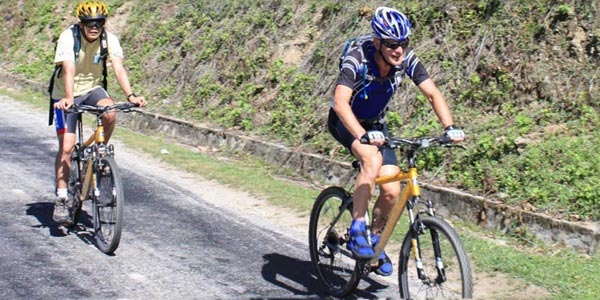
For the adventurous tourist who travels best pedaling wheels, it’s good news that biking expeditions are fast becoming a staple in Bhutan. If one’s up for turning the sense of adventure a notch higher, the “Tour of the Dragon, mountain bike race” is the answer.
On arrival, guests will be received at the airport by 1-derful Bhutan Tours’s guide who will be your companion for the duration of your tour Bhutan.
Drive to Paro town for lunch and to freshen up. After lunch, visit the National Museum and Paro Rinpung Dzong, the District Administrations’ and Religious activities’ centre.
Start drive to Thimphu and check-in at your hotel and then go out in town to mingle with the locals. And then later in the evening, you can visit:
Tashichho Dzong: The Tashichho Dzong is a Buddhist monastery cum fortress at the northern edge of Thimpu the capital city of Bhutan. The Dzong was built on the western bank of the river Wang Chu, and has historically served at the seat of the Druk Desi or the Dharma Raja of Bhutan‟s government. After the kings assumed power in 1907 this post was combined with that of the king and Thimphu severed as the summer caital of the kingdom before becoming the full time capital of Bhutan. The original Thimphu Dzong (the Dho-Ngyen Dzong) is said to have been constructed in 1216 by Lama Gyalwa Lhanangpa. And was later taken over by Lama Phajo Drukgom Shigpo before the Dzong was conquered by Shabdrung Ngawang Namgyal, who found the Dzong to be too small and expanded it to what is now known as theTashichho dzong is also called the "fortress of glorious religion." It was erected in 1641 and was subsequently rebuilt by King Jigme Dorji Wangchuck in the 1960s. The Dzong has been seat of the Royal government since 1952 and presently houses the Throne room and the Kings secretariat. The Tashichho dzong is also home to several ministries of the Bhutanese government, and the Central Monk Body which is the apex organization of the country's main spiritual order. The monument welcomes visitors during the Thimphu Tsechu festival which is held in autumn each year. The Dzongs main structure is a two striped quadrangle with 3 storied towers on each of its four corners.
Overnight at a hotel in Thimphu
Post breakfast you will visit the following places
Kuensel phodrang The Kuensel Phodrang or the Buddha point is the world‟s largest sitting Buddha statue, the statue is 167 feet high. The statue is situated on top of a hill overlooking the city of Timphu, it can be accessed by road and is about 15 minutes away from the city‟s center. The word Kuensel means everything is clear and from this place you will sure enjoy a great view of the Thimphu Valley on both sides. The statute will house a temple inside it, the statue and its adjoining car park and recreational center are currently under construction and is expected to be ready by December 2012. The statue is constructed out of bronze and is studded with many semi-precious stones. Since they are no factories in country that can make such a large bronze cast structure, statute is being manufactured in China and the pieces are brought to Bhutan and are assembled here. On the drive to the statue the steep winding hill road offers an unparalleled view of the city of Thimphu and is an excellent place to capture a view of the city especially after dark. A journalist once described the view as “seeing an osasis of light in the desert of darkness “as the city light of Thimphu shine very bright in an otherwise dark Thimphu valley.
National institute of zorig chusum: The art and crafts currently taught in Bhutan, were introduced to the country in the 15th century by Trenton Pema Lingpa. Trenton Pema Lingpa also known as the Great Treasure National Institute for Zorig Chusum - Discoverer is credited to have introduced these art forms to the people of Bhutan. These traditional crafts are a representation of the centuries of knowledge and ability that was been handed down to master craftsmen and artisan through each generation. Bhutan‟s unique artistic tradition has played a vital role in shaping the countries distinct culture and heritage. It was realized that this unique and priceless heritage of the nation need to be protected and promoted with the strong patronage of the royal government. With this vision in mind the royal institute for Zoring Chusum was established in the year 1971 to train the youth in the 13 traditional Arts and Crafts of Bhutan. The institute now falls under the aegis of the National Technical Training Authority which was established in 1990 to ensure high quality vocational training for the people of the country. The institute has now been operational for almost 40 years and has taught students the arts of painting, embroidery, calligraphy, sculpting and wood carving.
Have lunch in town and then visit the following
Memorial Chorten: Referred to as the Memorial Chorten, it’s actual name is Gongzo Chorten or Gyaldren Chorten. The Chorten (Stupa) is a chief landmark in the Capital city and is also a very sacred place of worship for the local people. The idea of the chorten was conceptualized by the 3rd King His Majesty Jigme Dorji Wangchuck to ward off negative energies. After His Majesty’s demise, the Chorten was built in his memory by the 4th King and the Queen Mother in 1972. Many old people come here early in the morning to circumambulate and say their prayers in the hopes of garnering enough good karma for their afterlife; they are joined by the middle and the younger generation in the evenings who also come to do either the same thing or to just relax their mind. The doors of this stupa remain mostly closed except on holy days. Inside, there are three stories and on each floor are statues of protective deities.
Motithang Takin preserve: The Motithang Takin Preserve also known as the Thimphu Zoo by many is a small natural preserve for the Takin Bhutan‟s national animal. It was originally a mini zoo, but it was converted in a preserve later on as the Takin. The mini zoo contained a small number of Takin but the King of Bhutan later decreed that it was improper for a Buddhist nation to keep an animal in captivity. The animals were set free and the zoo was shut down, but for some reason the Takin refused to leave the area for the forests nearby. Instead the animals were frequesntly found roaming around the streets of the capital city in search for food. As a result the government decided to demarcate an 8 acre fenced location as the Motithang Takin Preserve. The preserve is a forested preserve that mimics the Takin‟s natural habitat, in addition to the Takin there are a few musk deer and barking deer that live inside the preserve. There are plans to expand the preserves collection to include other rarely seen animals that live in Bhutan, currently the preserve plans to add the Red Panda and the Himalayan Serow to the preserve.
Then drive to Punakha. On the way, stop at Dochula Pass (3,100 m), where on a sunny day, you can get stunning views of the Himalayan ranges. The Dochu La Pass is probably the best known mountain pass in Bhutan. Located at an altitude of 3150 meter above sea level, the Dochu La Pass is about 30 kilometer away from the capital city Thimphu and the road to Punakha. On a clear day the pass offers visitors a spectacular view of the majestic eastern Himalayan Ranges. A cup of hot coffee or tea at the pass has almost become part of tradition for people travelling to and fro from Punakha to the capital city.
There is a small cafeteria at the pass that offers a chance for travelers to enjoy a hot beverage or a snack, it is located just off the road and overlooks the pass and is an ideal place to sit back, relax and enjoy the view. Another striking feature at the pass are the 108 Druk Wangyal Khangzang Chortens, that were built for the well-being of all sentiment beings on earth. The 108 Chorten were built as a tribute to the Kings of Bhutan for their selfless service and leadership they offer to the people of Bhutan. These Stupas or Chortens also represent the peoples love, appreciation and loyalty towards the country’s King.
Continue drive towards Punakha, check-in at your hotel and rest. If you feel like it then you can go for a walk nearby.
Overnight at a hotel in Punakha
Post breakfast, drive to KHAMSUM YUELLEY NAMGYAL CHORTEN: Khamsum Yuelley Namgyel Chorten, a temple that stands majestically on a strategic ridge above Punakha valley. The temple was built by the Queen Mothers to ward off negative energies, promote peace, stability and harmony in a changing world after it was prophesied in the scriptures by Thragthung Dudjom Lingpa.. It is said all its unique architectural designs have been drawn from the scriptures. The hike takes about 45 minutes one way through relatively easy path through paddy fields and thin pine forest. Once at the top, you can enter the stupa and climb all the way to the top for a breath taking view of the valley below.
Punakha Dzong: The Punakha Dzong or the Pungtang Dechen Phortang Dzong is located at the confluence of the Mo Chhu and the Po Chhu River, combine to form the Puna Tsang Chu which in turn is a tributary of the mighty Brahmaputra River. The Dzong was constructed by Zhabdrung Ngawang Namgyal in 1638 on the exact spot as prophesized by the Guru Rinpoche some 800 years ago. According to the prophecy of Guru Rinpoche “a person named Namgyal will arrive at a hill that looks like an elephant”. Another legend associated with the Dzong is that of Zowe Palep, the architect of the Dzong received vision of the Dzong in his sleep. This vision got imprinted in the architects mind and enabled him to construct the Dzong without putting his plans to paper.
It is the second largest and the second oldest Dzong in Bhutan. The Dzong is home to some of the most sacred relics of the Drukpa Kagyu School of Buddhism; it is also home to the sacred mortal remains of Zhabdrung Ngawang Namgyal and Terton Pema Lingpa the great treasure discoverer of Bhutan. The Dzong has also served as the capital Bhutan till 1955 before the capital was moved to Thimphu. The Dzong is still the winter residence of the Je Khenpo (chief abbot) and the central monastic body and plays host to the annual Punakha Tshechu Festival which is very popular with the locals and tourists alike.
Have lunch in town, rest for a while before going to visit Chimi Lhakhang (Temple of Fertility), it is dedicated to Lam Drukpa Kuenley (Divine Mad Man) and is the place from where Phalluses originated as the symbol of fertility and protection and can be seen everywhere in Bhutan, on house walls and roofs and altars
Overnight at a hotel in Punakha.
Have breakfast and drive to Phobjikha, the valley of the Black Necked Cranes. This is the winter nesting grounds for the endangered Black Necked Cranes, they start arriving by October end and leave for the Tibetan plateau by February. The valley is believed to have been created by glaciers and is shaped like a bowl, hence the name ‘Phob’ meaning bowl. Once there stop at Gangtey monastery, a privately funded Buddhist college of Nyingmapa sect. It’s worth going in for a short visit to see the beautiful carvings inside.
Check-in at your hotel and enjoy the beautiful scenic valley by going for a hike along the Gangtey Nature Trail is a beautiful hike around the valley through lightly covered pine and juniper forests. This is also the closest you will come to the cranes (during winters) as it’s prohibited to go away from the trail and down to the marshes in the valley.
Overnight at a hotel in Phobjikha
Post early breakfast drive toward Bumthang. On the way you will cross 2 passes, the first one Pelela (3300m)is less than an hour’s drive away. From the pass you will start descending and come across many villages, each with its own charm and beauty. Stop at Trongsa view point to take in the view of Trongsa Dzong.
In Trongsa, visit the following:
Trongsa Dzong: Originally named Chokor Rabtense Dzong it’s commonly referred to as Trongsa Dzong. This Dzong has played a very important role in the unification of Bhutan. The old East-West highway passed right through the Dzong making the Governor a very powerful man. The first and the second Kings ruled the country from here.
Ta Dzong (Museum): Ta Dzong means Wach tower and used to function as such for the main Dzong below. The structure has now been converted into a museum with the assistance from the Austrain Government, the museum features old artefacts from the Dzong which tells about the history of the region and of Bhutan.
The road starts ascending up to the third pass, Yotungla at 34oom. The air is much cooler and from there you will descend towards the valleys of Bumthang, the hills are much gentler and the valley wider, Bumthang is known as the ‘Switzerland in Bhutan’. Bumthang has 4 distinct valleys, Chumey, Chamkhar, Tang and Ura, your hotel is located in the first valley which is about 25kms away from town (Chamkhar valley) but is set in a picturesque location with views of open valleys of fields and meadows.
(NOTE: The road between Phobjikha and Bumthang is under renovation process and some stretches are very bad with landslides taking place regularly. Very rough drive is to be expected)
Overnight at a hotel in Bumthang
Post breakfast, meet with the officials for the Tour of the Dragon race and complete the formalities and registration process.
You will spend most of the day visiting local places of interest on your bicycles to get used to riding in high altitudes.
Jambey lhakhang was built by King Srongsen Gampo of Tibet in 659 AD. The temple was blessed by Guru Rimpoche during his visit to Bumthang. It is said that Guru Rimpoche was the one who brought Buddhism to Bhutan. It was renovated by Sindhu Raja after Guru Rimpoche restored his life with his magical powers. Many believe that there is a natural lake under the temple in which Guru Rimpoche took refuge on several occasions.
Kurjey Lhakhang is a monastery located in the Bumthang Valley of Bhutan. The Kurjey Lakahng Temple Complex is a 20 minute hike from the Jambay Lhakhang. According to legend, Guru meditated in a cave there to subdue an evil spirit and left an imprint of his body in the cave to serve as a reminder to all evil beings of his wrath. A cypress tree stands behind the temples, it is believed to have grown from Guru Rinpochhe’s staff. The Kurjey Lhakhang Temple complex consists of 3 major temples and surrounding Chortens. The first one dates back to the 17th Century, second one was built by the first King in the 1900’s and the last one was built by the Queen Grandmother in the 1980’s
Tamshing Lhakahng is home to Lama Sungtrul Rinpoche, the present day speech reincarnation of Pema Lingpa, the ‘Treasure revealer’.The temple was constructed in 1501 by the great Pema Lingpa himself. Before 1960 Tamshing was privately owned. The core mission of the Tamshing monastery is to teach the Dharma, perform religious service for the community and educate the young monks under its care. Since the monastery is not state run the monks find it a challenge to support the operation of this monastery and survive off donations from the devout. Most of the young monks in the monastery are under the age of 15 and are either orphans or come from very poor families who can’t afford to send their children to even the state run schools.
Mebartsho (The Burning Lake): It is not a lake as such but a small stream instead which gets collected into a small pool. This is the place where Pema Lingpa discovered his first treasure. The villagers didn’t believe that he found the treasures there. So, to prove that he was not lying he jumped in the lake with a burning butter lamp in his hand, when he came out he had some more treasures in his hand and the lamp was still burning.
In the evening, drop your Race-bag at the Tour of the Dragon office and attend a briefing about the race.
Overnight at a hotel in Bumthang
Drive to Ura which is about 50 km away from Chamkhar town. From among the 4 major valleys in Bumthang, Ura is the highest, widest, coldest and considered the most beautiful. Apart from the valley itself, the village is a fine example of a Bhutanese cluster settlement. The community remains close with each other and all development activities are controlled and overseen by themselves so that they do not stray away from their goal of being the GNH community.
After coming back from Ura, REST EARLY AS THE RACE WILL START EARLY IN THE MORNING AROUND 2-3AM.
Overnight at a hotel in Bumthang
Today is the TOUR OF THE DRAGON, MOUNTAIN BIKE RACE day. Starts from Chamkhar, Bumthang in central Bhutan to Trongsa via Yotungla Pass (3400m) to Wangdue Phodrang via Pelela Pass (3300m) and then to Thimphu via Dochula pass (3100m). Last time to cross the finishing will be at 7pm at the Clock Tower Center in Thimphu.
If you reach early then you can relax by visiting a spa and massage your aching muscles.
Overnight at a hotel in Paro.
Take it easy and rest your body after the gruelling race.
Drive to Paro later in the afternoon
Overnight at a hotel in Paro
Have early breakfast and drive up to the base of Taktsang Monastery (Tiger’s Nest). The most famous and sacred site among all the places in Bhutan. Guru Padmasambhava is said to have come riding on a flying tigress to this place and meditated in a cave for 3 months, it wasn’t until Zhabdrung Ngawang Namgyal came to this place and meditated that it gained the popularity that it has now. The present structure is said to be built in the 15th century but was destroyed by fire in 1998 and has been restored.
The walk is about 2 hours till the top through wide pathways which was built during the restoration works. One hour into the climb there is a tea point from where you get a very good view of the monastery, they also serve lunch here. From there it’s about another 45 minutes climb to the 2nd view point and the highest point in the hike.
Overnight at a hotel in Paro
Departure
We are a trusted travel company of travel specialists who create customized Bhutan journeys to the likings and sensibilities of our customers. We create trips around your interests and schedule—to make it one-of-a-kind experiences that are as unique as you are. We can have you traveling to the far reaches of Bhutan Himalayas, take you through the traditional and rustic villages of Eastern Bhutan or walk you through the Bhutan Festivals. Our expertise, know-how, and customer handling skills enable us design journeys that are adventurous, exciting, exploring and insightful. We have been in operation since 2009 and were earlier known as Bhutan Trip Advisors. Since then we have served more than 5,000 satisfied customers worldwide. Read More...
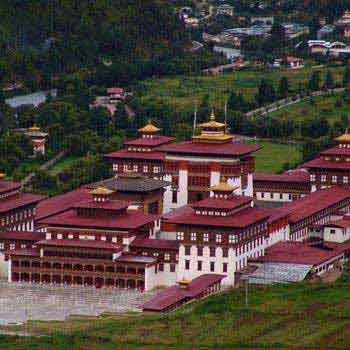 8D/7N
8D/7N
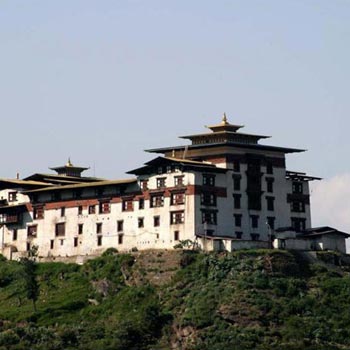 12D/11N
12D/11N
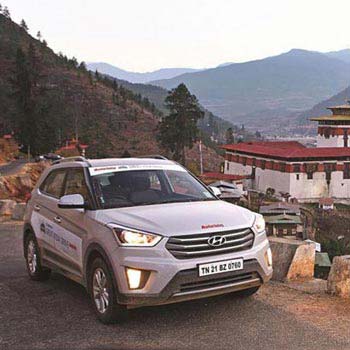 12D/11N
12D/11N
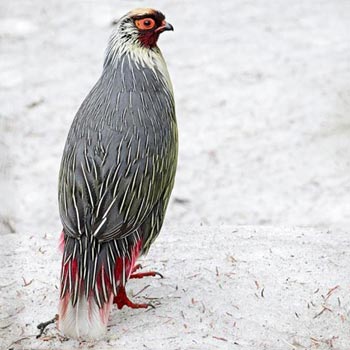 13D/12N
13D/12N
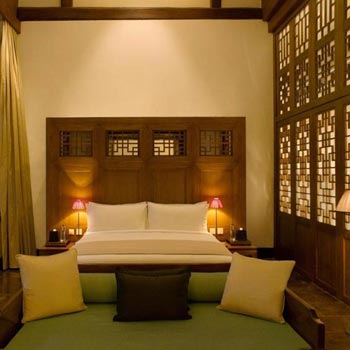 10D/9N
10D/9N
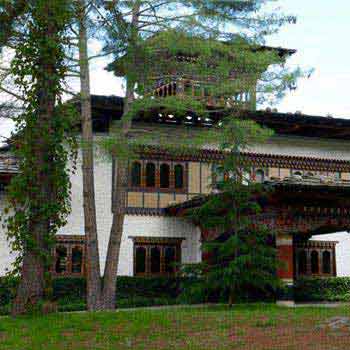 6D/5N
6D/5N
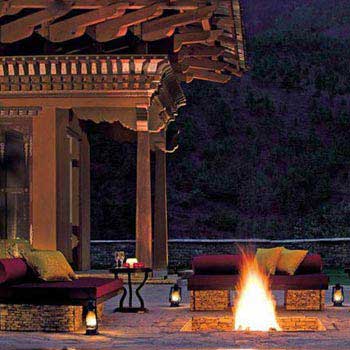 12D/11N
12D/11N
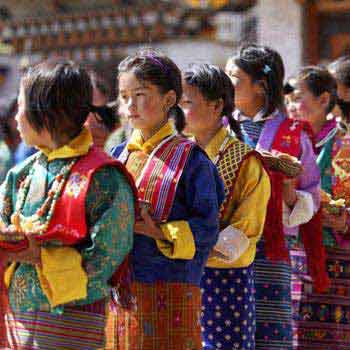 9D/8N
9D/8N
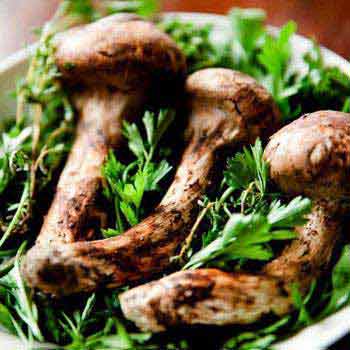 11D/10N
11D/10N
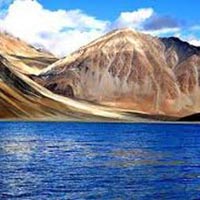 11D/10N
11D/10N
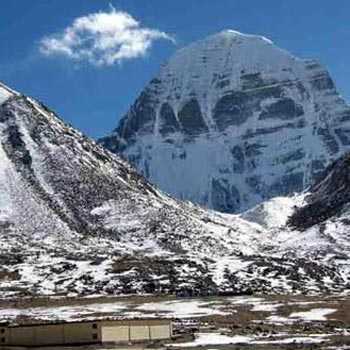 11D/10N
11D/10N
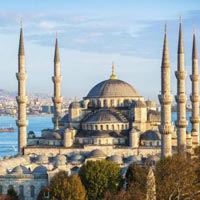 11D/10N
11D/10N
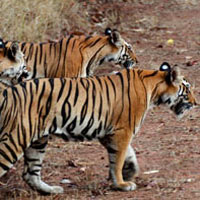 11D/10N
11D/10N
Bhopal - Pachmarhi - Jabalpur - Gwalior - Chhatarpur - Tikamgarh - Umaria
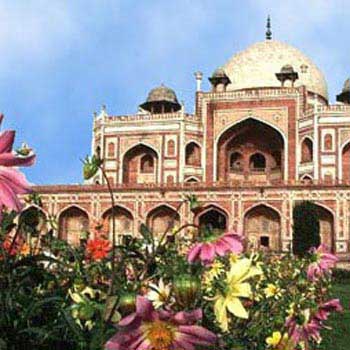 11D/10N
11D/10N
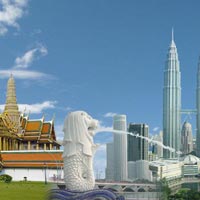 11D/10N
11D/10N
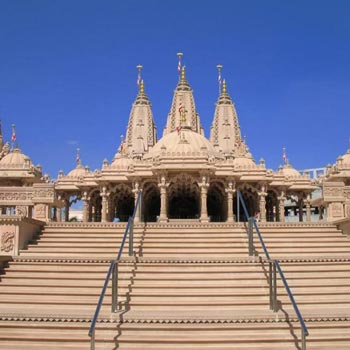 11D/10N
11D/10N
Best of Gujarat With Wildlife Tour
Ahmedabad - Bhavnagar - Diu - Junagadh - Rajkot - Bhuj - Jamnagar - Dwarka - Mumbai
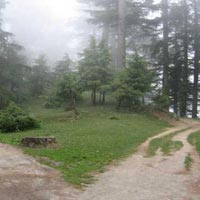 11D/10N
11D/10N
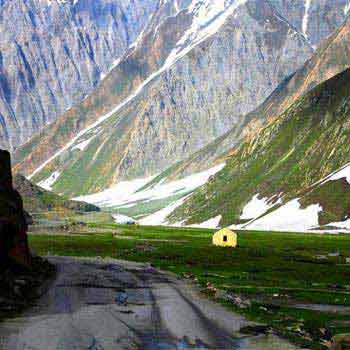 11D/10N
11D/10N
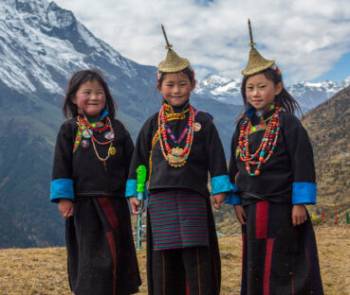 5D/4N
5D/4N
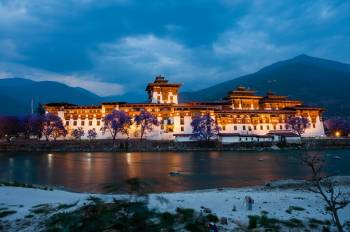 7D/6N
7D/6N
6 Nights/ 7 Days - Bhutan Happiness Tour
Punakha - Bumthang - Paro - Thimphu - Phobjik
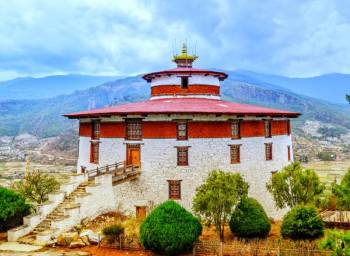 7D/6N
7D/6N
6 Night 7 Day Wonderful Bhutan Tour
Thimphu - Paro - Wangdue Phodrang - Punakha
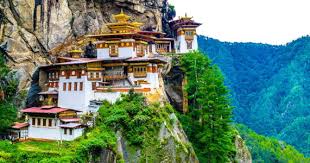 7D/6N
7D/6N
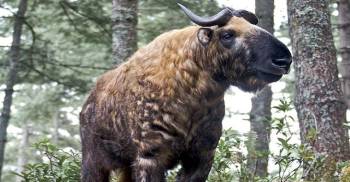 20D/19N
20D/19N
20 Days Land Package Country Tour Bhutan..
Punakha - Paro - Phuntsholing - Bagdogra - Bumthang - Mongar - Trashigang - Trongsa..
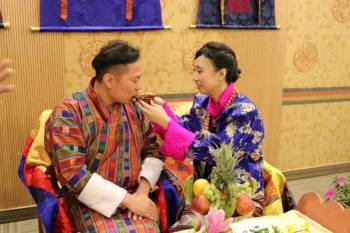 4D/3N
4D/3N
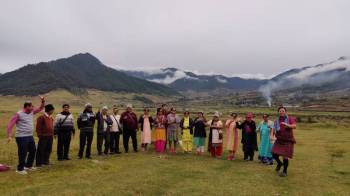 6D/5N
6D/5N
 7D/6N
7D/6N
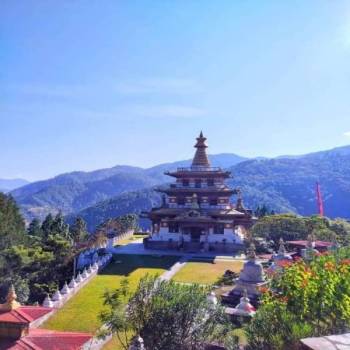 7D/6N
7D/6N
Rimso 7 Days 6 Nights Bountiful Tour fo..
Thimphu - Punakha - Paro - Phuentsholing